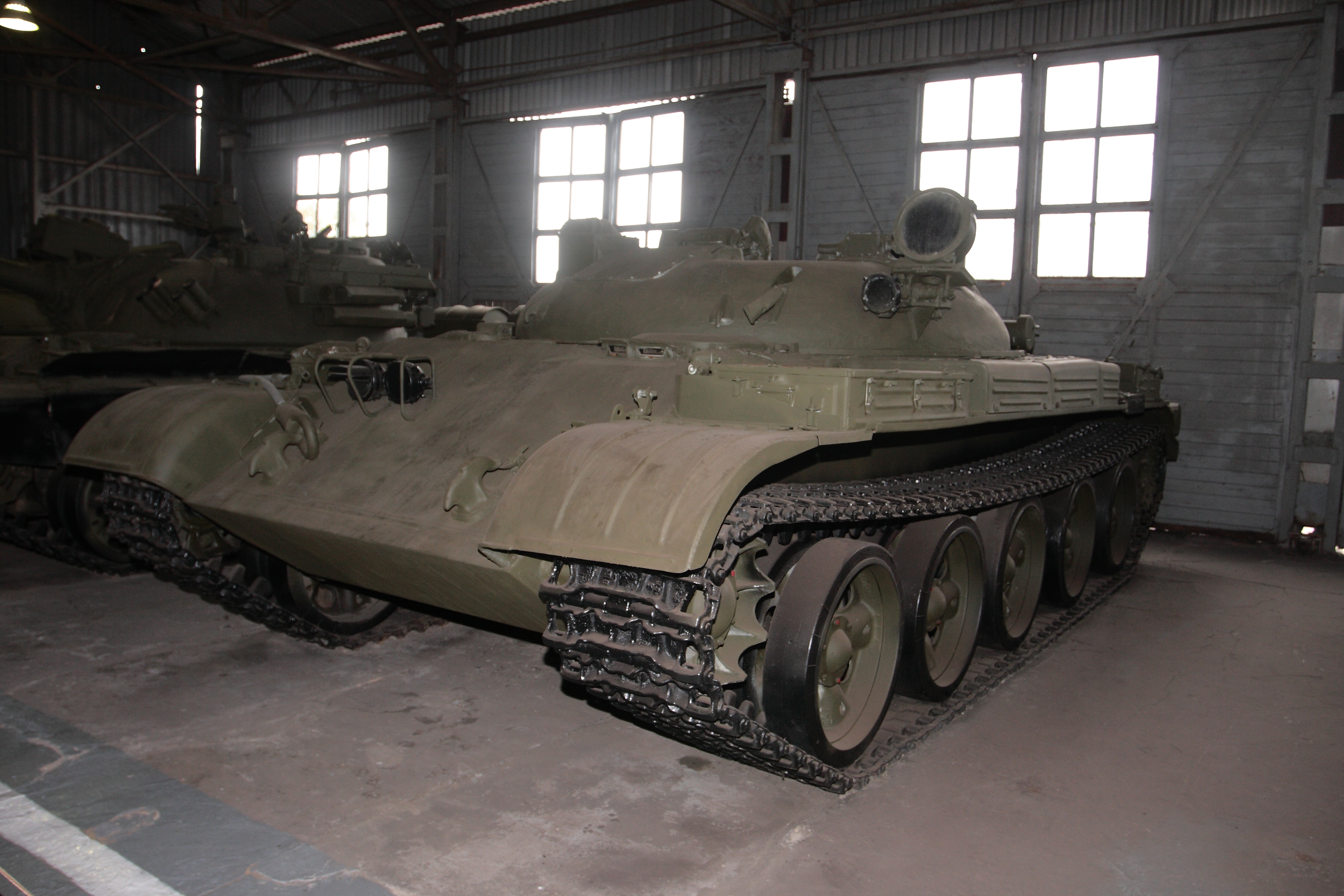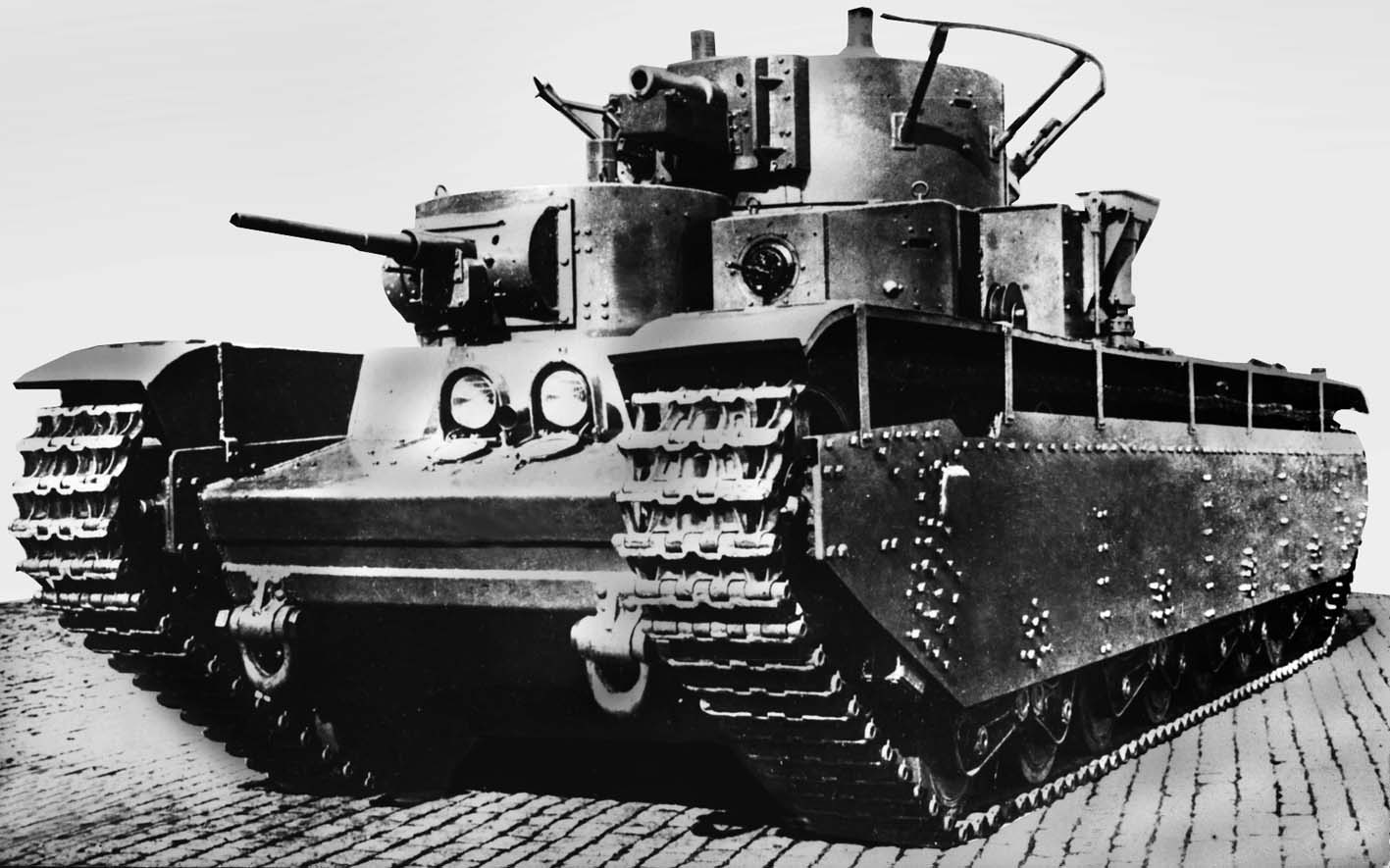|
Taifun 9M15
Taifun 9M15 (russian: тайфу́н, ''typhoon'') was a Soviet Union, Soviet missile developed to arm the Object 287 tank based on the T-64 tank chassis. The tank was armed with two 73 mm 2A28 low pressure guns mounted either side of a popup missile launcher. Both the guns and the missile launcher were automatically loaded, the guns each being fed from two eight round drums, giving a total of 32 guns rounds and 15 missiles stored in the tank. The missile launch platform was vertically stabilised, allowing the vehicle to move at low speed and still fire. The guns were remotely controlled by the gunner and commander from the front of the hull. The Taifun missile had a body diameter of 140 mm. It was fitted with a dual purpose warhead with a HEAT shaped charge capable of penetrating 500 mm of armour, and a fragmentation effect roughly equivalent to a 100 mm HE-FRAG shell. The missile was MCLOS radio command guided from the tank. The missile had an engagement envelope of between 500 ... [...More Info...] [...Related Items...] OR: [Wikipedia] [Google] [Baidu] |
Soviet Union
The Soviet Union,. officially the Union of Soviet Socialist Republics. (USSR),. was a transcontinental country that spanned much of Eurasia from 1922 to 1991. A flagship communist state, it was nominally a federal union of fifteen national republics; in practice, both its government and its economy were highly centralized until its final years. It was a one-party state governed by the Communist Party of the Soviet Union, with the city of Moscow serving as its capital as well as that of its largest and most populous republic: the Russian SFSR. Other major cities included Leningrad (Russian SFSR), Kiev (Ukrainian SSR), Minsk ( Byelorussian SSR), Tashkent (Uzbek SSR), Alma-Ata (Kazakh SSR), and Novosibirsk (Russian SFSR). It was the largest country in the world, covering over and spanning eleven time zones. The country's roots lay in the October Revolution of 1917, when the Bolsheviks, under the leadership of Vladimir Lenin, overthrew the Russian Provisional Government ... [...More Info...] [...Related Items...] OR: [Wikipedia] [Google] [Baidu] |
T-64
The T-64 is a Soviet tank manufactured in Kharkiv, and designed by Kharkiv Morozov Machine Building Design Bureau. The tank was introduced in the early 1960s. It was a more advanced counterpart to the T-62: the T-64 served in tank divisions, while the T-62 supported infantry in motorized rifle divisions. It introduced a number of advanced features including composite armour, a compact engine and transmission, and a smoothbore 125-mm gun equipped with an autoloader to allow the crew to be reduced to three so the tank could be smaller and lighter. In spite of being armed and armoured like a heavy tank, the T-64 weighed only . Soviet military planners considered the T-64 the first of the third-generation tanks and the first main battle tank. These features made the T-64 expensive to build, significantly more so than previous generations of Soviet tanks. This was especially true of the powerpack, which was time-consuming to build and cost twice as much as more conventional designs. S ... [...More Info...] [...Related Items...] OR: [Wikipedia] [Google] [Baidu] |
HEAT
In thermodynamics, heat is defined as the form of energy crossing the boundary of a thermodynamic system by virtue of a temperature difference across the boundary. A thermodynamic system does not ''contain'' heat. Nevertheless, the term is also often used to refer to the thermal energy contained in a system as a component of its internal energy and that is reflected in the temperature of the system. For both uses of the term, heat is a form of energy. An example of formal vs. informal usage may be obtained from the right-hand photo, in which the metal bar is "conducting heat" from its hot end to its cold end, but if the metal bar is considered a thermodynamic system, then the energy flowing within the metal bar is called internal energy, not heat. The hot metal bar is also transferring heat to its surroundings, a correct statement for both the strict and loose meanings of ''heat''. Another example of informal usage is the term '' heat content'', used despite the fact that p ... [...More Info...] [...Related Items...] OR: [Wikipedia] [Google] [Baidu] |
MCLOS
Manual command to line of sight (MCLOS) is a method for guiding guided missiles. With an MCLOS missile, the operator must track the missile and the target simultaneously and guide the missile to the target. Typically the missile is steered with a joystick, and its path is observed through a periscope-type telescopic sight. The missiles are usually equipped with a magnesium flare in the base that automatically ignites on launch and allows the gunner to visually track the fast-moving missile in a manner similar in concept to tracer ammunition. MCLOS requires considerable training and practice to master, since even a minor disruption in the gunner's concentration would likely cause a miss. These guidance systems have marginal accuracy on tank-sized targets, even with perfect line-of-sight by the gunner, due to erratic flight paths requiring timely manual corrections. As demonstrated by the Israeli Army under fire from Soviet-armed Arab states, responding to the distinctive smoke puff ... [...More Info...] [...Related Items...] OR: [Wikipedia] [Google] [Baidu] |
Object 287 (on The Basis Of T-64)
Taifun 9M15 (russian: тайфу́н, ''typhoon'') was a Soviet missile developed to arm the Object 287 tank based on the T-64 tank chassis. The tank was armed with two 73 mm 2A28 low pressure guns mounted either side of a popup missile launcher. Both the guns and the missile launcher were automatically loaded, the guns each being fed from two eight round drums, giving a total of 32 guns rounds and 15 missiles stored in the tank. The missile launch platform was vertically stabilised, allowing the vehicle to move at low speed and still fire. The guns were remotely controlled by the gunner and commander from the front of the hull. The Taifun missile had a body diameter of 140 mm. It was fitted with a dual purpose warhead with a HEAT shaped charge capable of penetrating 500 mm of armour, and a fragmentation effect roughly equivalent to a 100 mm HE-FRAG shell. The missile was MCLOS radio command guided from the tank. The missile had an engagement envelope of between 500 and 4000 m. ... [...More Info...] [...Related Items...] OR: [Wikipedia] [Google] [Baidu] |
Ground Pressure
Ground pressure is the pressure exerted on the ground by the tires or tracks of a motorized vehicle, and is one measure of its potential mobility, especially over soft ground. It also applies to the feet of a walking person or machine. Ground pressure is measured in pascals (Pa) which corresponds to the United States customary units unit of pounds per square inch (psi). Average ground pressure can be calculated using the standard formula for average pressure: ''P'' = ''F''/''A''. In an idealized case, i.e. a static, uniform net force normal to level ground, this is simply the object's weight divided by contact area. The ground pressure of motorized vehicles is often compared to the ground pressure of a human foot, which can be 60 – 80 kPa while walking or as much as 13 MPa for a person in spike heels. Increasing the size of the contact area on the ground (the ''footprint'') in relation to the weight decreases the ground pressure. Ground pressure of 14 kPa (2 psi) or ... [...More Info...] [...Related Items...] OR: [Wikipedia] [Google] [Baidu] |
IT-1
The IT-1 (russian: Истребитель танков–1 - 'Istrebitel tankov–1', lit. 'tank destroyer-1') was a Soviet cold war missile tank based on the hull of the T-62. The tank fired specially designed 3M7 Drakon missiles from a pop-up launcher. It saw a very limited service between 1968 and 1970. The large deadzone around the tank created by the missiles' minimum range combined with the limited amount of ammunition carried made it unpopular with the military. Also, the 520 kg of guidance equipment needed for the missile was impractical. Eventually, the tanks were converted into recovery vehicles. A turbine-powered version was also developed named the IT-1T. Adoption & retirement Object 150 entered production in 1968 with 220 units made between 1968 to 1970. Its purpose was to provide additional firepower to T-62 tanks. It was designated the IT-1 tank destroyer and issued to battalions at Belarus and Carpathian Military Districts, crewed by tank crews and artillery ... [...More Info...] [...Related Items...] OR: [Wikipedia] [Google] [Baidu] |
Anti-tank Guided Missiles Of The Cold War
Anti-tank warfare originated from the need to develop technology and tactics to destroy tanks during World War I. Since the Triple Entente deployed the first tanks in 1916, the German Empire developed the first anti-tank weapons. The first developed anti-tank weapon was a scaled-up bolt-action rifle, the Mauser 1918 T-Gewehr, that fired a 13mm cartridge with a solid bullet that could penetrate the thin armor of tanks of the time and destroy the engine or ricochet inside, killing occupants. Because tanks represent an enemy's strong force projection on land, military strategists have incorporated anti-tank warfare into the doctrine of nearly every combat service since. The most predominant anti-tank weapons at the start of World War II in 1939 included the tank-mounted gun, anti-tank guns and anti-tank grenades used by the infantry, and ground-attack aircraft. Anti-tank warfare evolved rapidly during World War II, leading to the inclusion of infantry-portable weapons such as t ... [...More Info...] [...Related Items...] OR: [Wikipedia] [Google] [Baidu] |
Cold War Missiles Of The Soviet Union
Cold is the presence of low temperature, especially in the atmosphere. In common usage, cold is often a subjective perception. A lower bound to temperature is absolute zero, defined as 0.00K on the Kelvin scale, an absolute thermodynamic temperature scale. This corresponds to on the Celsius scale, on the Fahrenheit scale, and on the Rankine scale. Since temperature relates to the thermal energy held by an object or a sample of matter, which is the kinetic energy of the random motion of the particle constituents of matter, an object will have less thermal energy when it is colder and more when it is hotter. If it were possible to cool a system to absolute zero, all motion of the particles in a sample of matter would cease and they would be at complete rest in the classical sense. The object could be described as having zero thermal energy. Microscopically in the description of quantum mechanics, however, matter still has zero-point energy even at absolute zero, because ... [...More Info...] [...Related Items...] OR: [Wikipedia] [Google] [Baidu] |
History Of The Tank
The history of the tank begins with World War I, when armoured all-terrain fighting vehicles were introduced as a response to the problems of trench warfare, ushering in a new era of mechanized warfare. Though initially crude and unreliable, tanks eventually became a mainstay of ground armies. By World War II, tank design had advanced significantly, and tanks were used in quantity in all land theatres of the war. The Cold War saw the rise of modern tank doctrine and the rise of the general-purpose main battle tank. The tank still provides the backbone to land combat operations in the 21st century. Development World War I generated new demands for armoured self-propelled weapons which could navigate any kind of terrain, and this led to the development of the tank. The great weakness of the tank's predecessor, the armoured car, was that it required smooth terrain to move upon, and new developments were needed for cross-country capability. The tank was originally designed as a ... [...More Info...] [...Related Items...] OR: [Wikipedia] [Google] [Baidu] |
.jpg)




